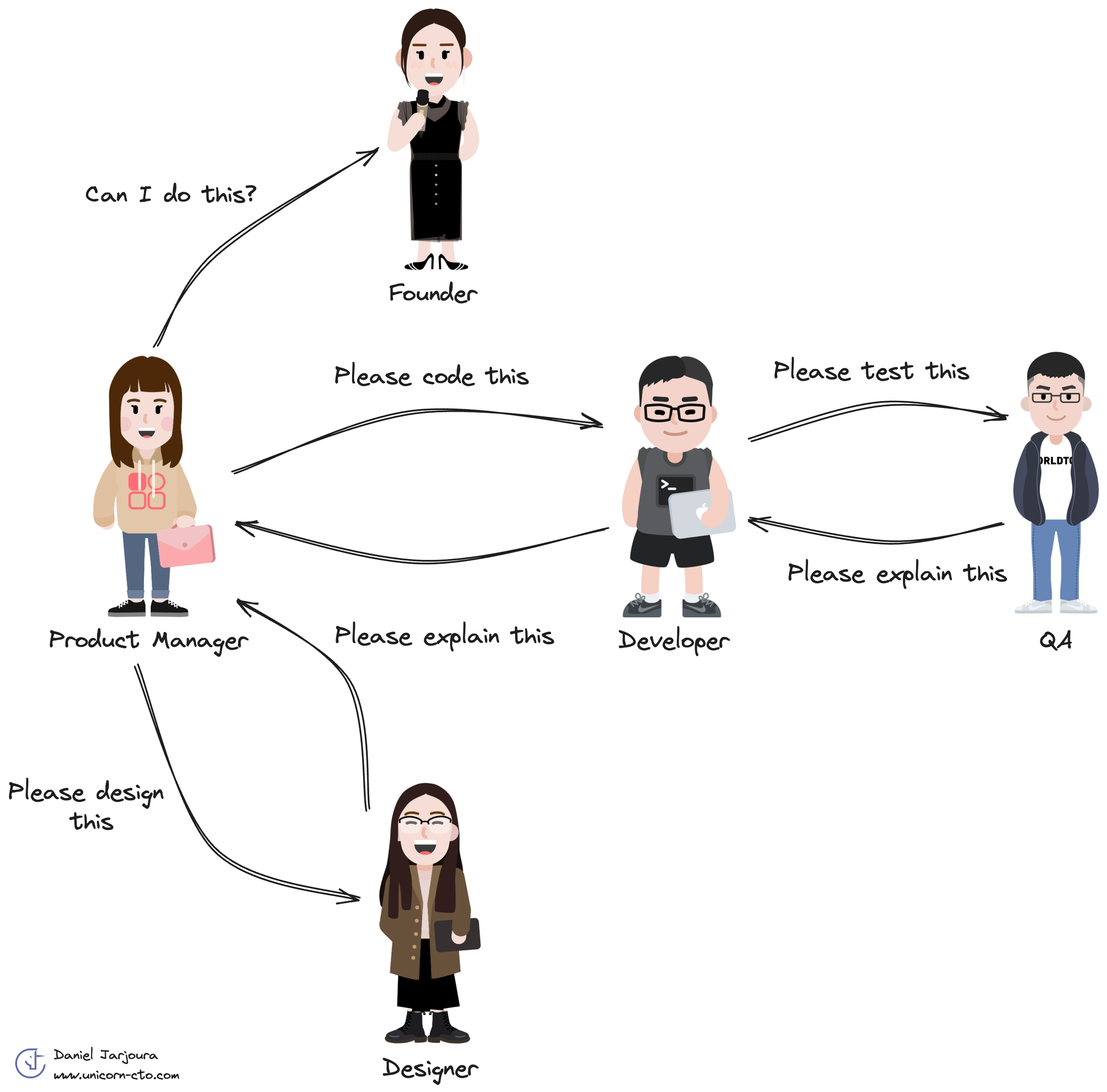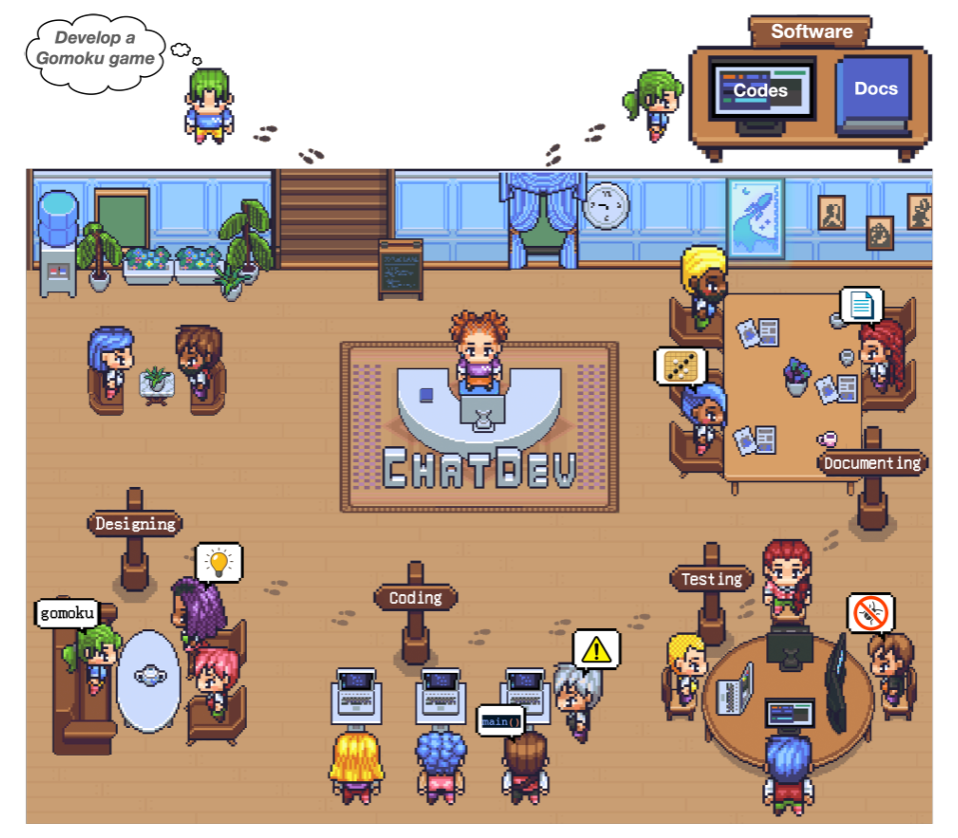Over the past few years, I’ve written and talked extensively about what to expect from a CTO, from the pre-product-market fit stage to leading a department of hundreds of engineers. The common thread of my thinking has always been about how to blend people leadership with technical leadership. But Large Language Models (LLMs) put all this in the gutter.
Since the launch of OpenAI’s ChatGPT in November 2022, a large portion of the technology industry has realised how LLMs will profoundly change how we conceive and ship software. Top models now support code generation (OpenAI, Claude, Mistral, Llama…), powering a wave of coding copilots and agents: GitHub Copilot, Cognition’s Devin, Poolside, Magic.dev and many others, rightfully attracting hundreds of millions in investments. After all, software development is a $600B market (28 million software developers x $23,640 annual median salary).
This post is not about whether AI coding agents will replace developers (they will) but rather about how CTOs should change their mindset about building organisations with AI and human agents.
The Software Delivery System
If you work in a software organization, you know that conceiving, building, and running software has little to do with code.

In reality, developers spend as low as 15% to around 40% of their work time coding. Factors such as code maintenance, security issues, communication and collaboration occupy a significant portion of a developer's time. And, coding is just one step of the process! There are 6 to 8 steps from the initial idea in a product manager’s head to the actual feature in production. If we assume that development is the longest step in the process, accounting for 50% of the time, coding automation will only improve 15-20% of the process. Good, but not game-changing if you ask me! In reality, in a software organisation, most of the time is spent interacting with other “agents”.

You see what I mean, right? So, to truly leverage generative AI to improve a software delivery system, we would need to look beyond just code AND solve what Alex Komoroske calls the “coordination headwind” (see his classical presentation here).
Software Delivery Autonomous Agents
In a recently released white paper titled “Communicative Agents for Software Development”, researchers from various academic institutions introduced ChatDev, a virtual chat-powered company for software development, bringing together "software agents" from diverse social identities, including chief officers, professional programmers, test engineers, and designers.

The idea behind the white paper is to improve the output of an AI-based software team by virtually reproducing the back-and-forth exchanges between the various “agents” of a software delivery system. What’s interesting here is that the effort involved in creating software based on a client request requires coordination between different agents.
So, creating an AI-first software organisation would require automating not just developers but all system agents (product managers, designers, developers, testers, etc.) and their decision-making process. And it’s (theoretically) possible!
Today’s LLMs are already pretty good at generating feature ideas from client requests or a well-structured prompt. They’re also good at generating written specifications from an idea (with human supervision) or generating tests. Developers have copilots. What’s left are only the designs, but solutions like Uizard will very soon close the gap.

As you can see, AI agents can now (or will soon) be able to perform most routine tasks in the system. So, what’s left for humans?
Humans in the System
Fear not–humans won’t disappear from software organisations anytime soon. But I believe the nature of these organisations will dramatically transform in the coming years. First of all, small problems will usually require teams of 5 or fewer. There are now thousands of micro-saas companies with tiny teams and often only one person in the software organisation. And they make money. My friend Tibo did a $10M exit with his micro-saas startup and was the only tech and product person.
Second, as “work complicates to fill the available time” (Parkinson’s law), organisations will tackle more and more complex problems. As work complicates, AI agents will provide less straightforward answers since their main advantage is to generate highly probable solutions to known problems. Humans will then “manage” multiple AI agents who execute tasks while focusing most of their time on providing creative value.
So humans will still have to manage other humans, but probably fewer of them and in a different way: less supervision and more management.
In an AI-first world, the role of the CTO will increasingly involve orchestrating a symphony of AI and human agents, ensuring that each plays its part effectively to achieve a harmonious and productive output. On the one hand, it will mean being able to conceptualise massive systems with few humans and thousands of AI agents. On the other hand, it will mean being even more human with humans: showing empathy, hiring for mindset and character, coaching and developing talents.